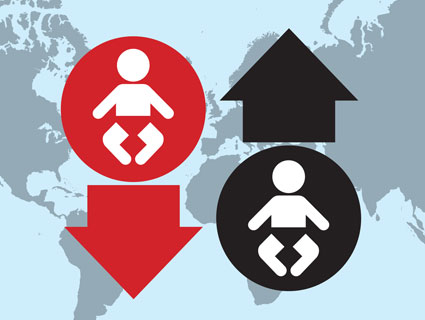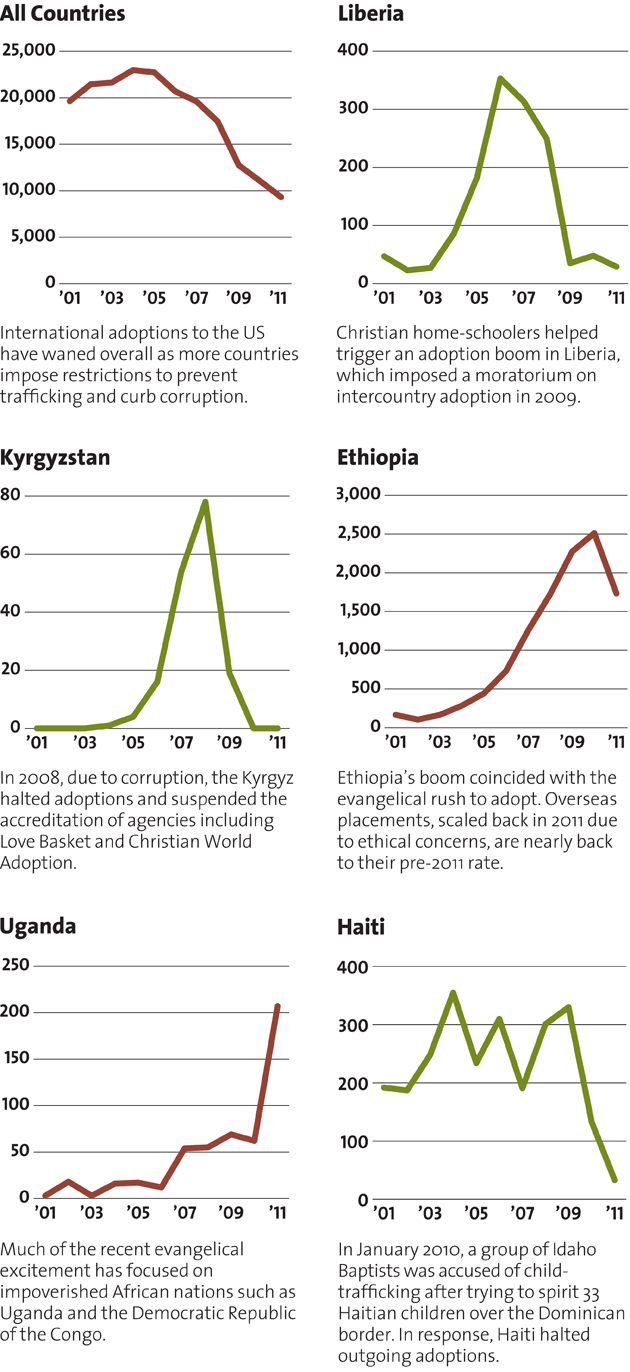
Adoptions between countries have been on a downward trend since 2004, when more nations began enacting restrictions to prevent illegal and unethical activities related to corruption and the trafficking of children. Yet at around that time, as Kathryn Joyce points out our companion story, “Orphan Fever: The Evangelical Movement’s Adoption Obsession” a sort of adoption fever swept through America’s evangelical churches:
[T]he Southern Baptist Convention, America’s largest Christian denomination save the Catholic Church, passed a resolution calling on its 16 million members to get involved, whether that meant taking in children themselves, donating to adoptive families, or supporting the hundreds of adoption ministries that were springing up around the country to raise money and spread the word. Neo-Pentecostal leader Lou Engle also called for mega-churches to take on the cause, which would give them “moral authority in this nation.”
The movement spawned numerous conferences and books built around the idea that adopting a needy child is a form of missionary work. “The ultimate purpose of human adoption by Christians,” author Dan Cruver wrote in his 2011 book, Reclaiming Adoption, “is not to give orphans parents, as important as that is. It is to place them in a Christian home that they might be positioned to receive the gospel.” At an adoption summit hosted by the Christian Alliance for Orphans at Southern California’s Saddleback Church, pastor Rick Warren told followers, “What God does to us spiritually, he expects us to do to orphans physically: be born again and adopted.”
The countries still experiencing adoption booms amid the overall decline have often been the focus of intense missionary activity. “I think if evangelicals weren’t driving a lot of the adoption business, there would be no international adoption, period,” Karen Moline, a board member for the watchdog group Parents for Ethical Adoption Reform, told Joyce. The following charts show the cycles of annual adoptions from selected nations to families in the United States.















